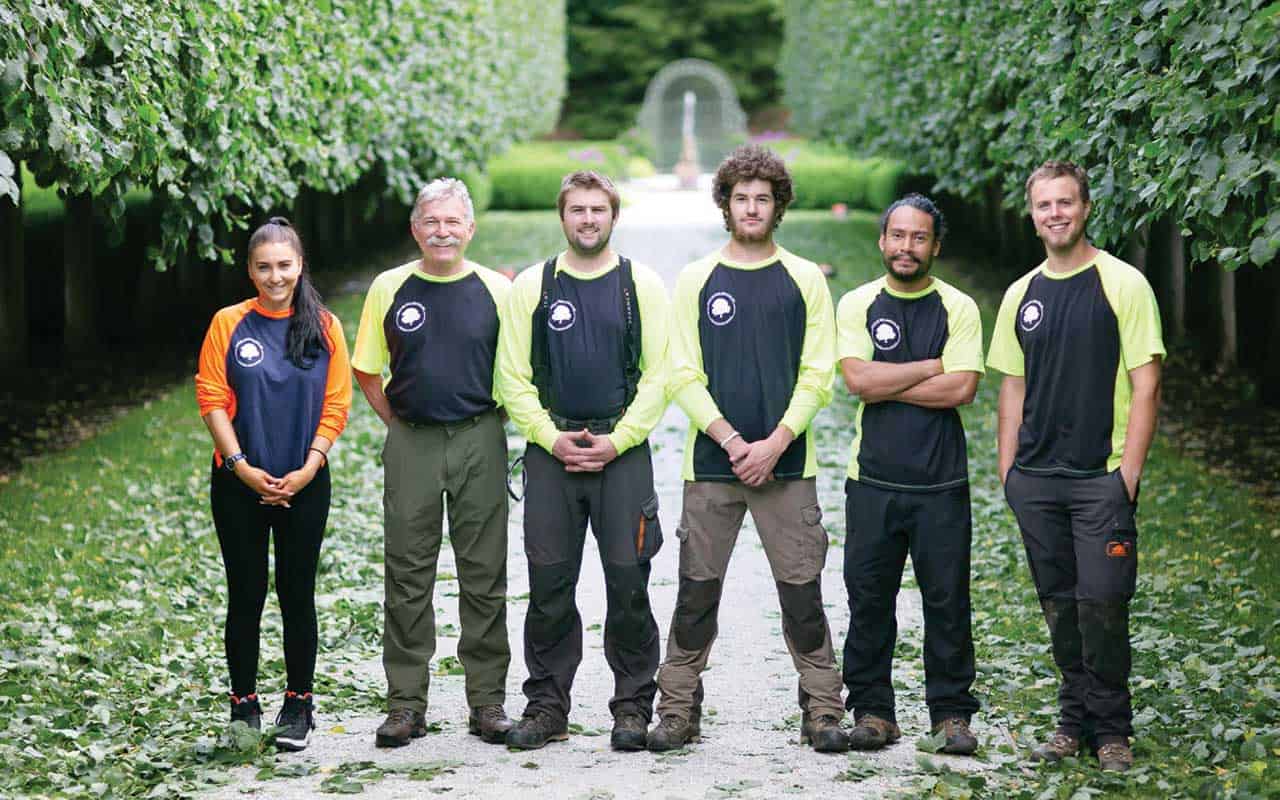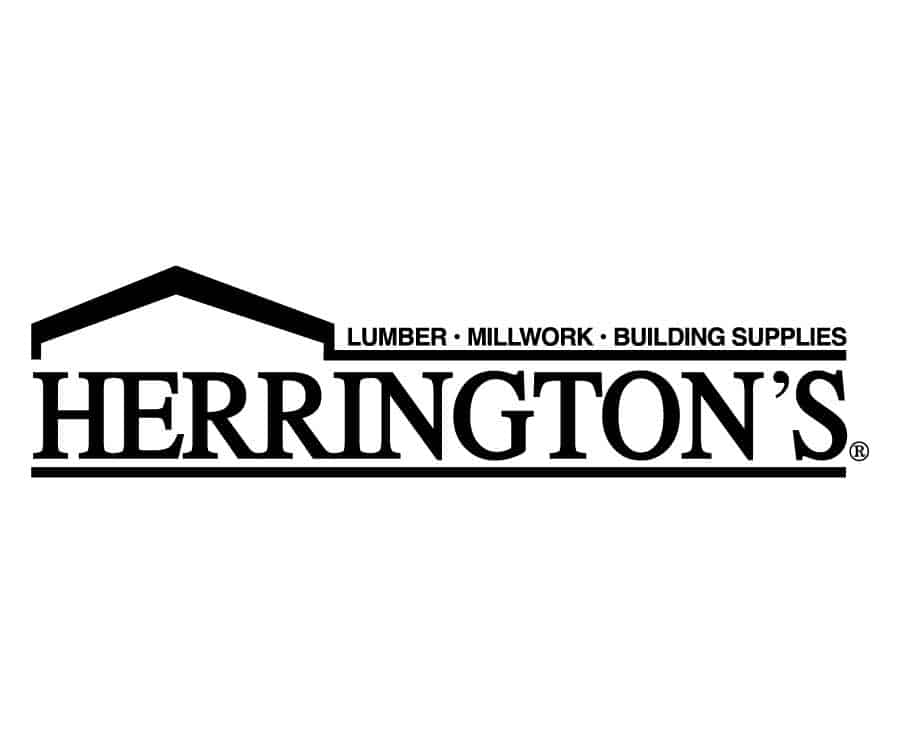Main Street Business

Forester to Arborist
How did your appreciation for nature begin?
I grew up hunting and fishing in the woods in central Pennsylvania. As an Explorer Scout I planted white pine seedlings – sixty years later they are a 60 feet tall wind screen, oxygen producer, and erosion manager. When I was 14, I purchased my first tree identification book. All of that led me to studying forestry and getting an Associates of Applied Science Forest Technician degree from Penn Tech, an affiliate of Penn Sate in Williamsport, PA. After graduation I went to work for New England Log Homes in Great Barrington, MA, buying red pine logs for houses. After two years I went out on my own doing tree work, mowing lawns, and providing forestry consulting – advising the owners of forests how to most effectively grow trees as a cash crop. Over time I became disenchanted with this commercial view and started reading about arboriculture. Then I discovered Dr. Alex Shigo and that changed everything.
Who is Dr. Shigo? Why was he so important to you?
Alex Shigo was a senior researcher at the US Forest Service. After retirement he began writing books on the biology and treatment of trees. I attended his workshops and fed my passion to learn about preserving trees. Shigo’s approach was revolutionary in the sense that he debunked so many commonly held assumptions. For example instead of trimming a limb flush with a tree trunk he showed us how to leave a branch collar which will seal naturally without paint or cement. He taught us to look at tree roots and soil where the tree gets its nutrition. By 1991, I became a certified arborist in Massachusetts and New York, and licensed in Connecticut. It took four or five years to transition my business from forestry consulting to working with trees in the human landscape as an arborist.
How do you treat trees?
There are many techniques for improving tree health. There are the basics like tree pruning, cabling to provide support, and aerating soil so that tree roots can breathe. We also apply specialized fertilizers and bark treatments. One of our “patients” is the 120-year-old American elm in front of The Bank of Green County in Copake, NY (pictured on page 12). It’s one of the heritage trees of the town. Every three years we inject it prophylactically with fungicide to prevent attack by Dutch elm disease, which is a fungal infection that killed most of the American elms in the United Sates. You could think of it as a flu shot for a tree.
Are there associations for arborists? Would that be a tree huggers group?
There are two important ones. The Tree Care Industry Association (TCIA) focuses on the business side of running a tree care business while the International Society of Arboriculture (ISA) focuses on scientific research, education and arborist certification. And then there are state associations like the Massachusetts Arborists Association, the Connecticut Tree Protective Association, and the New York State Arborists Association. We are all members of all of them.
Has the business changed much since you started?
The industry has evolved dramatically with increasing research and academic understanding. New solutions for caring for trees are a regular occurrence.
How seasonal is this business?
We’re always busy and have six full-time employees who work all year long. At this time of year we are busy pruning trees, responding to downed tree emergencies, cabling and removing trees – much easier to do when there are no leaves.
Why might homeowners want to cut down a tree? What happens to the wood?
There are many reasons for removing a tree. It can be too close to the house or at the end of its life span. Owners can get tired of leaves on the lawn, acorns bouncing off their car, or pine needles on the roof. Or it’s in the wrong place for a new swimming pool. Sometimes an owner needs to cut down trees in order to sell a house. About 40% of our revenue comes from cutting down trees. Sometimes an owner wants to use the wood for lumber and we leave logs in place. We don’t bid on projects like clearing trees from utility lines – we are a specialized firm primarily for home owners.
In our region it’s still acceptable, i.e. within a homeowner’s right to cut down a tree on your own property, but there is a trend in some progressive communities, like Wellesley, MA, to control tree removal on private property. Towns are beginning to understand the larger social, historical, and environmental context of trees in private as well as public spaces. Some towns require compensation to remove a large tree, in the form of payment or replanting.
Is tree care more important to your business than chopping down trees?
Over 50% of our business concerns all aspects of tree care including pruning, treatments, lightning protection, soil amendments like aeration with an air spade, mulching, assessing tree health and risk, etc. Trees have evolved over millions of years to thrive in the soil that they create themselves, a medium rich in organic matter and organisms that support symbiotic connections. Highways, leaf blowers, driveways, parking lots, and lawns interfere with this natural process of carbon cycling, moisture retention, and temperature stabilization. Trees really struggle and need help.
What trees do you recommend in our current environment?
Today tree species have to tolerate low-oxygen soils, turf competition, higher heat and commonly used chemicals. It’s important to select native species to preserve the food net. Insects have evolved to feed and reproduce on native plants. Our native fauna, particularly birds, have evolved with this ready supply of insect food for their young. Doug Tallamy’s books Bringing Nature Home and The Living Landscape explain the importance of native species. They include lists of desirable native species by region. With global warming I would select species from the mid-Atlantic region for planting for the future. My personal favorites are red bud, pagoda dogwood, white oak, American elm, red maple, swamp white oak, tulip trees, and sassafras with its beautiful leaves, river birch and silver maples. Slow growing trees like black gum, Nyssa silvatica, are the longest lasting. For hedges I like little leaf lindens, eastern hemlock, and arborvitae. I don’t recommend invasive non-natives like the popular burning bush, privet, or barberry.
Do you plant trees?
That’s one thing we don’t do. We leave tree purchase and planting to local, qualified nurseries.
What sort of consulting do you do?
I consult frequently on the value of a tree in legal situations – often when a tree on one person’s property is killed by removal or over-zealous trimming or root damage by a neighbor. You can trim trees and plants overhanging the property line but not if it will jeopardize the health of the tree. There are formulas for estimating the value of a tree that start with the size – the trunk circumference, height and crown breadth – and take into consideration where it is on the property, its condition, and species. The estimate of value can vary tremendously from a large, historic tree in full health, which could be $50,000 to as little as $500.
Who are your customers? How do they find you?
Most of our customers are private individuals with a few exceptions like the work we do at The Mount, Edith Wharton’s home in Lenox, MA, and caring for the trees at Berkshire School. About 50% of clients are in Massachusetts, 40% in New York, and 10% in Connecticut. Almost all of our business comes from referrals but the internet is increasingly important. My daughter Larissa is our office manager and is in charge of our internet presence and social media.
Our community involvement gives us lots of exposure. For example, in conjunction with Arbor Day we developed Race Mountain Career Day. We invite four area high schools to our shop where we spend a couple hours with speakers. Then our crew members set up outdoor stations to demonstrate tree climbing, rigging, tree injections, chainsaw safety, and tree ID. We then provide a pizza lunch and mingling question and answer time for up to 45 students.
We donate tree work as part of the Arbor Day of Service and the Berkshire County Arborists Day. We’re supporters of the Berkshire Botanical Garden, the Massachusetts Arborists Association, the Tree Fund (research), and the Women’s Tree Climbing Workshop.
Could you comment on safety issues in the industry?
Safety is a large concern in our work. Kieran is our dedicated Certified Tree Safety Professional and conducts weekly safety meetings with the crew to keep their minds focused on safe practices. Each crew member is CPR & First Aid Certified. And we conform to the current safety requirements for our industry.
We are insured – Vehicle, General Liability, Workers’ Compensation, and Umbrella. We are proud to share our Certificate of Insurance with our clients.
Do you have a business plan? How has your business grown over the years.
In conjunction with Entry to Entrepreneurship, a local group that supports business planning, Kieran developed a business transition plan this past winter. Here’s a link that explains: http://www.berkshares.org/business/5th-annual-entry-entrepreneurship-showcase.
Our business has seen steady growth and evolution over the last 40 years. More and more we see the need to minimize chemical inputs to the extent possible and to begin managing invasive plants that are beginning to radically affect our beautiful native forest edges and disturbed lands.
After creating a family business what is your next goal?
I think I’d like to get my Bachelor’s in arboriculture, explore the American West, and travel through Europe after my kids take over the business and before I die.



